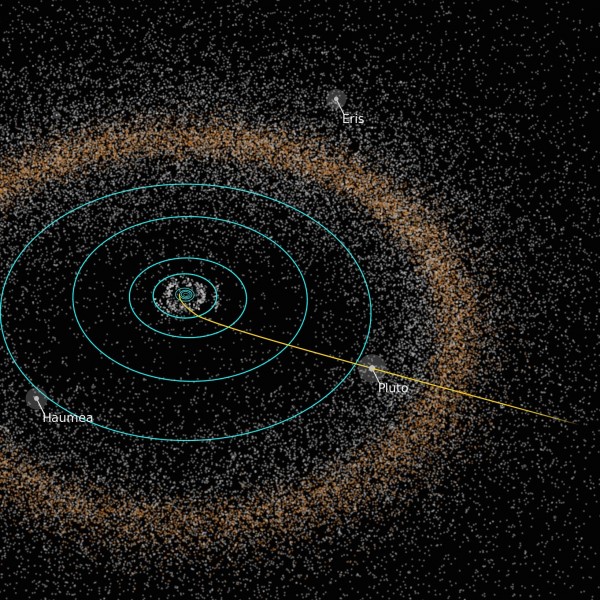
The New Horizons spacecraft – which passed Pluto in July, 2015 – is alive and well and heading outward in our solar system. Its team of scientists hopes to get the nod from NASA on an extended mission for the craft, but, in the meantime, New Horizons announced on May 18, 2016 that it’s obtained the closest view ever of a Kuiper Belt Object (KBO) called 1994 JR1.
This is New Horizons’ second view of 1994 JR1, a 90-mile (145-km) wide Kuiper Belt object (KBO) orbiting more than 3 billion miles (5 billion km) from the sun. Earlier, New Horizons had detected JR1 from 170 million miles (280 million km) away. Science team members have used the two observations of this distant remnant of the early solar system to pin down the object’s location in the Kuiper Belt, learn how fast it spins, and dispel a theory that JR1 is a quasi-satellite of Pluto.
Simon Porter, a New Horizons science team member from Southwest Research Institute (SwRI) in Boulder, Colorado, said JR1’s location is now known:
… to within about 600 miles (1,000 km), far better than any small KBO.
From the closer vantage point of the April 2016 observations, the team also determined the object’s rotation or spin period, by observing the changes in light reflected from its surface. They’ve now determined that a JR1 “day” is 5.4 hours. Team member John Spencer, also from SwRI, commented:
That’s relatively fast for a KBO. This is all part of the excitement of exploring new places and seeing things never seen before.
According to these scientists’ statement, Spencer added that:
… these observations are great practice for possible close-up looks at about 20 more ancient Kuiper Belt objects that may come in the next few years, should NASA approve an extended mission … The spacecraft is on course for an ultra-close flyby of another Kuiper Belt object, 2014 MU69, on January 1, 2019.
New Horizons flew through the Pluto system on July 14, 2015, making the first-ever close-up observations of Pluto and its family of five moons. Relive some of the excitement, here.

Bottom line: New Horizons – which visited Pluto in July of 2015 – is hoping for an extended mission that’ll let it fly close to a Kuiper Belt Object (KBO) called 2014 MU69 in 2019. In the meantime, it’s now obtained two distant views of a KBO called 1994 JR1, and done some science on it.











